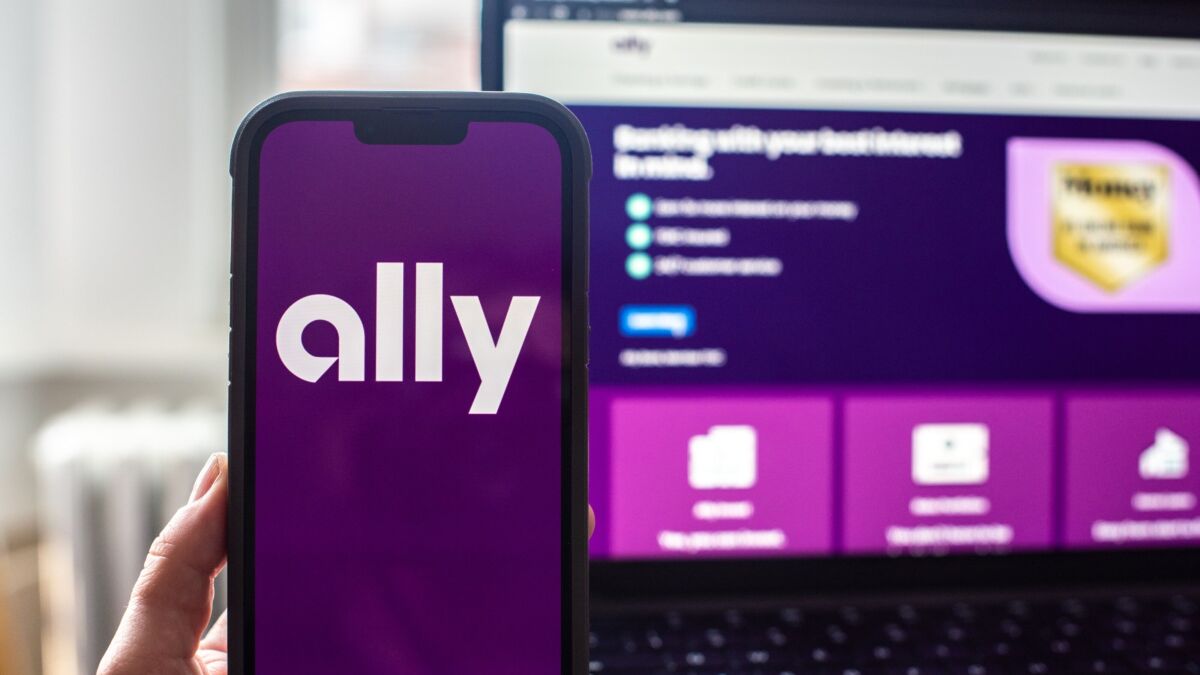Hey there, future entrepreneurs! Ever dreamed of launching your own business but got stuck on the financial hurdle? Well, here’s the good news: you can start a business with absolutely no money. Yes, you read that right! In this comprehensive guide, we’re unraveling eight strategic steps that will transform your dreams into a flourishing reality without a single dollar invested. Let’s dive right into the blueprint of zero-cost entrepreneurship.
Step 1: Choose a Business Idea
Selecting the right business idea is the foundational step in launching a successful venture without capital. It involves a comprehensive exploration of industries that resonate with your passions and interests. This initial phase isn’t merely about identifying any idea; rather, it’s about finding a convergence between your passion, market demand, and profitability.
Passion-Driven Exploration:
Begin by examining industries or niches that genuinely ignite your passion. Consider your hobbies, interests, or skills that you’re enthusiastic about. Your genuine interest will serve as the driving force behind your business, keeping you motivated during challenging times.
Analyzing Profit Potential:
While passion is crucial, analyzing the profit potential within those areas is equally essential. Conduct thorough research to understand the market demand, trends, and potential customer base. Identify pain points or unmet needs within the market that your business idea can address.
Market and Competitor Analysis:
Delve into market and competitor analyses to gain insights into existing businesses operating within your chosen industry. Understanding competitors’ strengths, weaknesses, and strategies allows you to carve out a unique proposition. This analysis aids in identifying gaps or areas where existing businesses might be underserving customers.
Shaping a Unique Business Proposition:
Combining your passion with the identified market gap leads to the creation of your unique business proposition. This proposition forms the backbone of your business idea and sets you apart from competitors. It could involve offering a new solution, enhancing an existing product/service, or targeting an underserved demographic within the market.
Aligning Passion, Skills, and Market Gap:
The ultimate goal is to align your passion, skills, and the identified market gap. This alignment becomes the sweet spot where your interests meet a profitable opportunity. It’s this convergence that fuels your commitment and determination to build a successful business from scratch, even without substantial initial capital.
Remember, starting a business without money is challenging, but selecting the right idea—one that resonates with your passions while addressing a market need—sets a solid foundation for your entrepreneurial journey.
Step 2: Write a Business Plan
Creating a meticulous business plan acts as the compass guiding your entrepreneurial journey. It’s a comprehensive document that outlines every aspect of your business, from inception to growth. This plan serves as a roadmap, offering direction and clarity amidst the uncertainties of starting a business without capital.
Financial Projections:
Include detailed financial projections in your plan. This involves forecasting expenses, revenue streams, and potential profits. Even without initial funds, outlining a financial plan helps you understand the viability and sustainability of your business idea.
Operational Strategies:
Detail the operational aspects of your business. This encompasses production, distribution, logistics, and any processes crucial to running your business. Even when resources are limited, outlining operational strategies helps in optimizing available resources.
Market Approach:
Describe your market approach—how you plan to enter the market, attract customers, and retain them. Include marketing strategies, customer acquisition methods, and approaches to stand out in a crowded market. Emphasize how your business addresses a specific need or gap in the market.
Guidance from Experts:
Don’t hesitate to seek guidance from industry experts or mentors. Their experience and insights can be invaluable, ensuring that your business plan is robust and addresses potential blind spots. Their feedback might highlight areas that need further refinement or adjustment.
Organizational Tool and Pitch Material:
Your business plan is not only an organizational tool but also a presentation material for potential investors, partners, or stakeholders. A well-structured plan showcases your professionalism, dedication, and strategic thinking, making it an attractive proposition for partnerships or funding.
Adaptability and Flexibility:
While crafting the plan, keep in mind that it’s not set in stone. Business environments are dynamic, and your plan should be adaptable to changes and unforeseen circumstances. Flexibility ensures you can pivot when needed without losing sight of your goals.
Holistic Approach to Business:
Ultimately, the business plan presents a holistic view of your business idea. It consolidates your vision, strategies, and goals into a tangible document. It’s a crucial foundation that not only guides your actions but also communicates your business vision to others effectively.
Remember, a well-structured and detailed business plan not only keeps you organized but also becomes a compelling tool. It showcases your business idea’s potential, serving as a roadmap that navigates your business through its initial stages and beyond.
Step 3: Choose a Name and Create a Brand
Establishing your business’s name and brand identity is fundamental to its success. This step involves more than just a name; it’s about crafting an identity that resonates with your audience and distinguishes your business in the market.
Distinctive and Legally Clear Name:
Choose a name that’s not only unique but also legally available. Conduct thorough research to ensure the name isn’t trademarked or being used by another business. A distinctive name lays the foundation for your brand’s recognition and uniqueness.
Developing Brand Identity:
Your brand identity encompasses more than just a name—it’s the personality and values your business represents. Define your brand’s mission, vision, and values. Consider elements like logo, color schemes, typography, and visual aesthetics that reflect these values and appeal to your target audience.
Resonating with the Audience:
Understanding your target audience is crucial in developing a brand identity that resonates with them. Identify their preferences, pain points, and aspirations. Your brand identity should strike a chord with your audience, making them feel connected to your business on an emotional level.
Launching a Website:
In today’s digital age, a website serves as the online face of your business. It’s more than just a platform; it’s a digital storefront where potential customers can learn about your brand, products, and services. Ensure your website aligns with your brand identity, showcasing your values and offerings effectively.
Communicating Brand Values:
Consistency is key. Ensure that your brand values are communicated consistently across all platforms—your website, social media, marketing materials, and interactions with customers. This consistency reinforces your brand’s identity and fosters trust and recognition among your audience.
Evolving with the Brand:
As your business grows, your brand might evolve. Be open to refining or adapting your brand identity based on feedback, market changes, or the evolving needs of your audience. Flexibility in brand evolution allows your business to stay relevant and appealing.
Establishing Trust and Credibility:
A strong brand identity not only attracts customers but also builds trust and credibility. It differentiates your business from competitors and creates a lasting impression on your audience, ultimately leading to customer loyalty and advocacy.
Remember, your brand identity is more than just aesthetics—it’s about creating a meaningful connection with your audience. By crafting a distinctive name, developing a compelling brand identity, and launching a website that reflects your brand’s values, you pave the way for your business to stand out in a crowded marketplace.
Step 4: Validate Your Ideas
Pre-selling physical products through preorders is a strategic approach that goes beyond just selling—it’s a vital step in validating and refining your business concept. This phase plays a pivotal role in setting the foundation for a successful business launch without substantial initial capital.
Validating Business Concept:
By offering products for pre-sale, you gauge the market’s interest and validate your business concept. The response you receive from potential customers serves as tangible feedback, indicating whether your product aligns with their needs and preferences.
Building Anticipation and Interest:
Pre-selling creates anticipation and buzz around your product or service before it officially hits the market. It serves as a teaser, generating curiosity and excitement among your target audience. This anticipation can translate into a stronger initial customer base.
Generating Initial Funds:
One significant advantage of pre-selling is that it generates funds before you incur production costs. The revenue generated from preorders can be utilized to kickstart the production process, helping overcome the initial financial barrier.
Refining Business Model:
The validation stage through pre-selling provides insights into customer behavior, preferences, and demand. Analyzing preorder data allows you to refine your business model, tweaking aspects such as pricing, features, or marketing strategies based on customer feedback.
Assessing Product Viability:
Pre-selling helps assess the viability of your product or service in the market. It mitigates the risk of investing heavily in a product that might not gain traction, allowing you to pivot or adjust before committing significant resources.
Garnering Necessary Resources:
Apart from financial resources, pre-selling also helps gather other essential resources. It can attract attention from potential partners, investors, or suppliers who see the market interest as validation and might be inclined to collaborate or support your venture.
Establishing Customer Relationships:
Engaging with customers during the preorder phase fosters relationships. Communication about the product, updates, and delivery timelines creates a sense of trust and transparency, laying the groundwork for future customer loyalty.
Leveraging Preorder Success:
Success in preorders can serve as a marketing tool for the official launch. Customer testimonials, social proof, and a successful preorder phase can be leveraged to attract more customers and build credibility.
Pre-selling through preorders isn’t just about making sales; it’s about validating your business idea, generating initial revenue, refining strategies, and setting the stage for a successful business launch based on actual market demand and customer feedback.
Step 5: Source Funding
Even without upfront capital, funding options exist. Explore avenues like loans, grants, or crowdfunding. Innovative business models like dropshipping, where inventory holding isn’t required, can be a game-changer. Being resourceful and creative is key here. There are various avenues and innovative strategies to explore that can propel your business forward:
Traditional Funding Sources:
Loans and grants remain viable options, even without initial capital. Small business loans from financial institutions or government-backed programs offer opportunities to kickstart your venture. Grants, particularly those targeted at startups or specific industries, provide non-repayable funds, easing the financial burden.
Crowdfunding Platforms:
Crowdfunding is a game-changer in the entrepreneurial landscape. Platforms like Kickstarter, Indiegogo, or GoFundMe allow you to pitch your business idea to a broader audience. People interested in your concept can contribute funds, often in exchange for early access or exclusive perks.
Innovative Business Models:
Embrace innovative business models that alleviate the need for significant initial investment. Dropshipping is a prime example—it eliminates the necessity of holding inventory. Instead, products are shipped directly from suppliers to customers, reducing upfront costs and inventory management hassles.
Bootstrapping and Self-Financing:
Consider bootstrapping—using personal savings or revenue generated by the business itself to fund its growth. Reinvesting profits back into the business ensures organic and sustainable growth. It’s a slow but steady approach that minimizes dependency on external funding.
Angel Investors or Venture Capital:
Explore angel investors or venture capitalists interested in early-stage startups. These investors provide funding in exchange for equity or ownership stakes in your business. Their expertise and network can be invaluable beyond just financial support.
Microloans and Peer-to-Peer Lending:
Microloans from nonprofit organizations or peer-to-peer lending platforms offer smaller sums of money, often with favorable terms for startups. These can serve as stepping stones to bridge initial financial gaps.
Barter and Partnerships:
Consider bartering services or forming strategic partnerships. Collaborating with other businesses or individuals who can provide services or resources you need in exchange for your offerings can be mutually beneficial.
Resourcefulness and Creativity:
Being resourceful is paramount. Look for unconventional ways to cut costs, whether through shared workspaces, using open-source tools, or negotiating favorable terms with suppliers. Think creatively about how to achieve more with fewer resources.
Networking and Mentorship:
Building a strong network and seeking mentorship can open doors to funding opportunities. Networking events, industry conferences, and mentorship programs can connect you with potential investors or advisors willing to support your business.
Online Platforms and Competitions:
Participate in business competitions or pitch events. Winning or being recognized in such platforms not only provides funding but also offers exposure and credibility, attracting potential investors or customers.
Starting a business without upfront capital demands creativity, persistence, and a willingness to explore diverse funding avenues. By combining various funding sources and innovative strategies, you can secure the resources needed to turn your entrepreneurial vision into reality.
Step 6: Grow Your Business
Once you’ve gathered initial earnings, it’s critical to allocate these resources strategically. Every decision regarding reinvestment should align with your business’s growth trajectory and long-term success.
Strategic Allocation of Earnings:
When deciding where to allocate your initial earnings, consider various areas that can drive substantial growth. This might involve dividing resources among marketing initiatives, expanding inventory, or investing in human resources by hiring key personnel.
Marketing Strategies:
Investing in marketing is crucial to increase brand visibility and reach your target audience. Consider targeted advertising campaigns, content creation, social media marketing, or collaborations with influencers. Analyze which channels offer the best return on investment and focus your resources there.
Inventory Expansion:
Expanding your inventory might be necessary to meet growing demand or diversify your product range. Carefully analyze customer preferences and market trends to identify which products or services require expansion, ensuring optimal use of resources.
Human Resources and Talent Acquisition:
Hiring the right talent at the right time is essential for business growth. Assess areas where additional manpower can enhance operations, customer service, or product development. Invest in individuals who align with your business values and contribute meaningfully to your goals.
Technology and Infrastructure:
Consider investing in technology or infrastructure that streamlines operations and enhances efficiency. This might include upgrading software systems, implementing automation, or improving infrastructure to support scalability.
Research and Development:
Allocate funds towards research and development to innovate and improve your products or services. This investment fuels continuous improvement, keeping your offerings competitive and meeting evolving customer needs.
Financial Management:
Prudent financial management is key. Allocate a portion of your earnings to build a financial cushion or emergency fund. This reserve can safeguard your business during unexpected challenges or allow for future expansion opportunities.
Scalability and Long-Term Vision:
Prioritize investments that contribute to your business’s scalability and align with your long-term vision. Consider the potential impact of each investment on future growth rather than focusing solely on immediate returns.
Measuring and Evaluating Returns:
Continuously monitor and evaluate the returns on each investment. Use key performance indicators (KPIs) to measure the effectiveness of your strategies. Adapt and reallocate resources based on data-driven insights to optimize growth.
Sustainability and Consistency:
Ensure that your investment strategies align with sustainable growth. Consistency in reinvestment and a balanced approach to resource allocation contribute to steady and sustainable business expansion.
Flexibility and Adaptability:
Remain flexible and adaptable in your investment decisions. Market dynamics may change, and being nimble allows you to pivot and reallocate resources when necessary to capitalize on emerging opportunities or address challenges.
Strategic reinvestment of initial earnings is pivotal for sustainable business growth. By allocating resources wisely and focusing on investments that contribute to expansion, market presence, and long-term success, you set the stage for continued growth and resilience in your business.
Step 7: Other Steps to Consider
While the primary steps are crucial, auxiliary actions complement and fortify the foundation of your business. These auxiliary actions encompass a range of strategies that support and bolster your entrepreneurial journey:
Maintaining a Day Job for Financial Stability:
Sustaining a day job in the initial stages of your business provides financial stability. It ensures a steady income stream while your business is in its infancy, reducing financial stress and allowing you to reinvest your business earnings.
Setting Achievable Goals:
Setting clear, achievable goals is vital for progress. Break down larger objectives into smaller, manageable milestones. This approach fosters a sense of accomplishment, maintains motivation, and keeps you on track towards your long-term vision.
Seeking Mentorship or Assistance:
Seeking guidance from mentors or experts in your industry is invaluable. Their experience and insights offer perspectives that can prevent pitfalls, provide solutions to challenges, and accelerate your learning curve in navigating the entrepreneurial landscape.
Continuous Focus on Brand Building:
Consistent effort towards brand building is essential. Focus on developing a strong brand identity, cultivating a compelling brand story, and engaging with your audience across various platforms. Brand building fosters trust, credibility, and loyalty among customers.
Launching a Website and Online Presence:
Your website serves as a gateway to your brand in the digital realm. Ensure it’s user-friendly, informative, and aligns with your brand identity. Establishing a robust online presence through social media and other digital channels enhances visibility and accessibility to potential customers.
Idea Validation and Adaptation:
Continuously validate your business idea by seeking feedback, conducting market research, and staying attuned to customer needs. Adapt your strategies based on insights gathered during this validation process to refine and optimize your offerings.
Ongoing Fund Sourcing Efforts:
Continue exploring and diversifying your funding options. Even after the initial stages, sourcing funds for growth and expansion remains critical. Keep exploring loans, grants, investor partnerships, or crowdfunding to fuel your business’s advancement.
Networking and Relationship Building:
Building a network of industry peers, potential customers, and collaborators is instrumental. Networking opens doors to opportunities, partnerships, and valuable connections that can propel your business forward.
Learning and Development:
Embrace a continuous learning mindset. Invest time in acquiring new skills, staying updated with industry trends, and refining your expertise. This ongoing learning journey keeps you adaptable and competitive in the market.
Adaptability and Resilience:
Embrace adaptability and resilience as core attributes. The entrepreneurial journey is dynamic, and the ability to pivot, learn from setbacks, and persevere through challenges is crucial for long-term success.
These auxiliary actions, when integrated with the main steps, fortify your business foundation. They provide essential support, guidance, and resilience necessary for navigating the complexities of entrepreneurship and establishing a thriving and sustainable business.
Conclusion:
Starting a business sans financial backing is indeed feasible. Passion, determination, and resourcefulness are your greatest assets. By following these eight steps diligently, you can turn your entrepreneurial dreams into a tangible and successful business reality. Remember, the world awaits your innovative ideas. Take that leap and carve your path to success!
FAQs:
1. Can I start a business without any money?
Yes, it’s possible! With careful planning, leveraging resources, and innovative strategies, you can launch a business without significant upfront capital.
2. How crucial is the business plan when starting a business with no money?
A meticulously crafted business plan is essential. It serves as a roadmap, helping you outline your goals, strategies, and potential hurdles. It’s a powerful tool, especially when seeking funding or partnerships.
3. What if I don’t have a unique business idea?
Finding a unique idea isn’t always necessary. Focus on a niche you’re passionate about and consider how you can add value or a unique twist to existing concepts.
4. Are there risks in validating business ideas through preorders?
There are inherent risks, but preorders serve as a litmus test for your idea’s market appeal. It’s a practical way to validate demand while generating initial funds.
5. What funding options are available for starting a business without money?
Explore various funding avenues such as loans, grants, crowdfunding, or innovative business models like dropshipping that don’t require hefty initial investments.
6. How important is branding when starting a business with no funds?
Branding is crucial. It helps create a distinct identity and connects with your target audience. A strong brand can attract customers even without substantial initial investments.
7. Is it advisable to quit my day job when starting a business with no money?
It’s often wise to maintain a stable income source initially. Consider starting your business as a side project until it gains traction and provides a steady income.
8. What are the common challenges in starting a business with no money?
The major challenges revolve around resource scarcity. Balancing expenses, sourcing initial funding, and effective marketing on a tight budget are common hurdles.
9. How can I grow my business without significant capital?
Strategically reinvest your initial earnings into marketing, inventory expansion, or hiring as needed. Focus on incremental growth and resource optimization.
10. Are there success stories of businesses started with no money?
Absolutely! Many successful businesses began with minimal funds, relying on determination, creativity, and strategic planning to thrive.
Tags:
- Zero-cost entrepreneurship
- Starting a business without capital
- Business ideas without money
- Funding options for startups
- Branding strategies on a budget
- No-money business plan
- Validating business ideas
- Growth strategies for startups
- Resourceful entrepreneurship
- Starting a business with minimal funds










